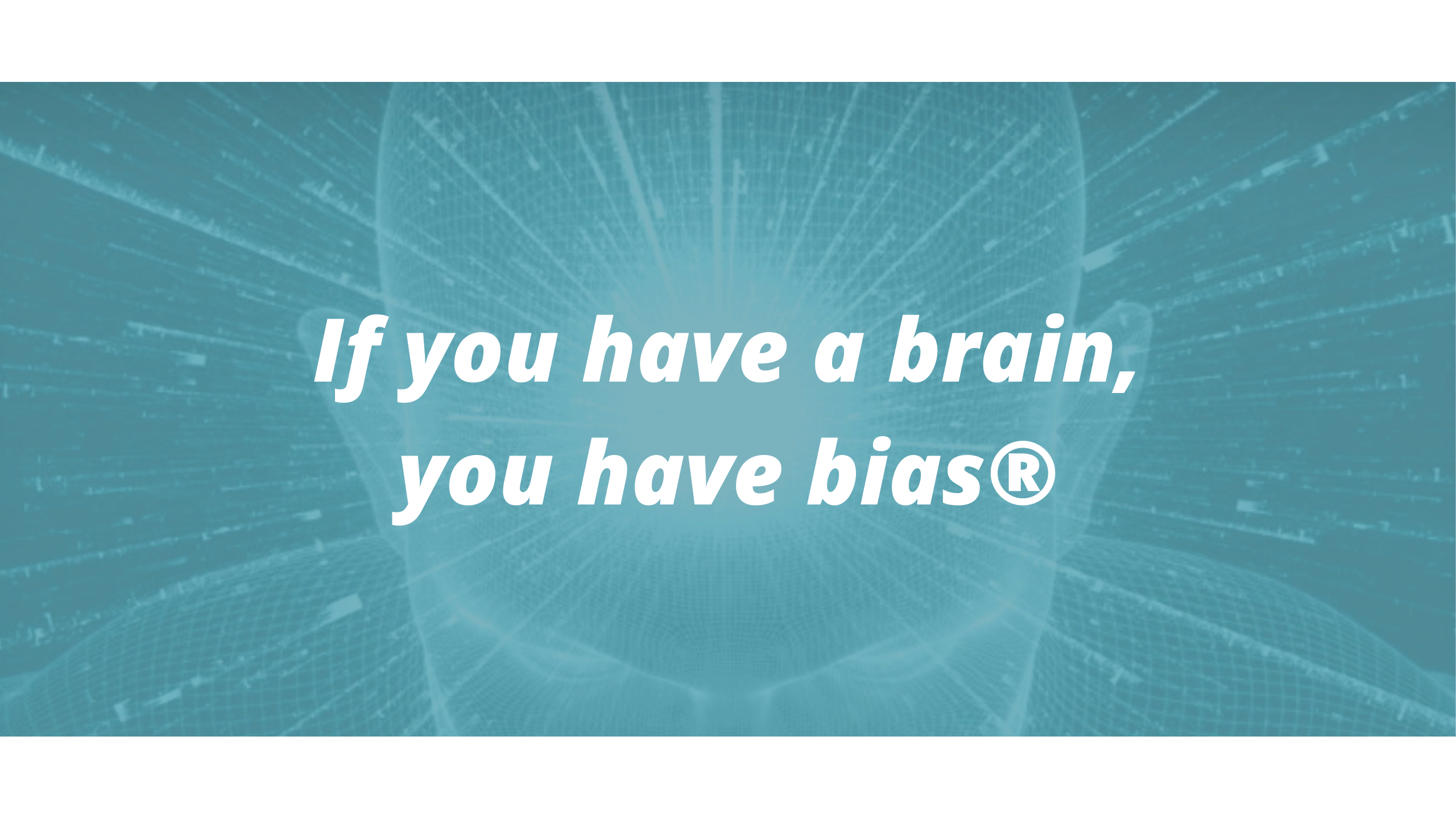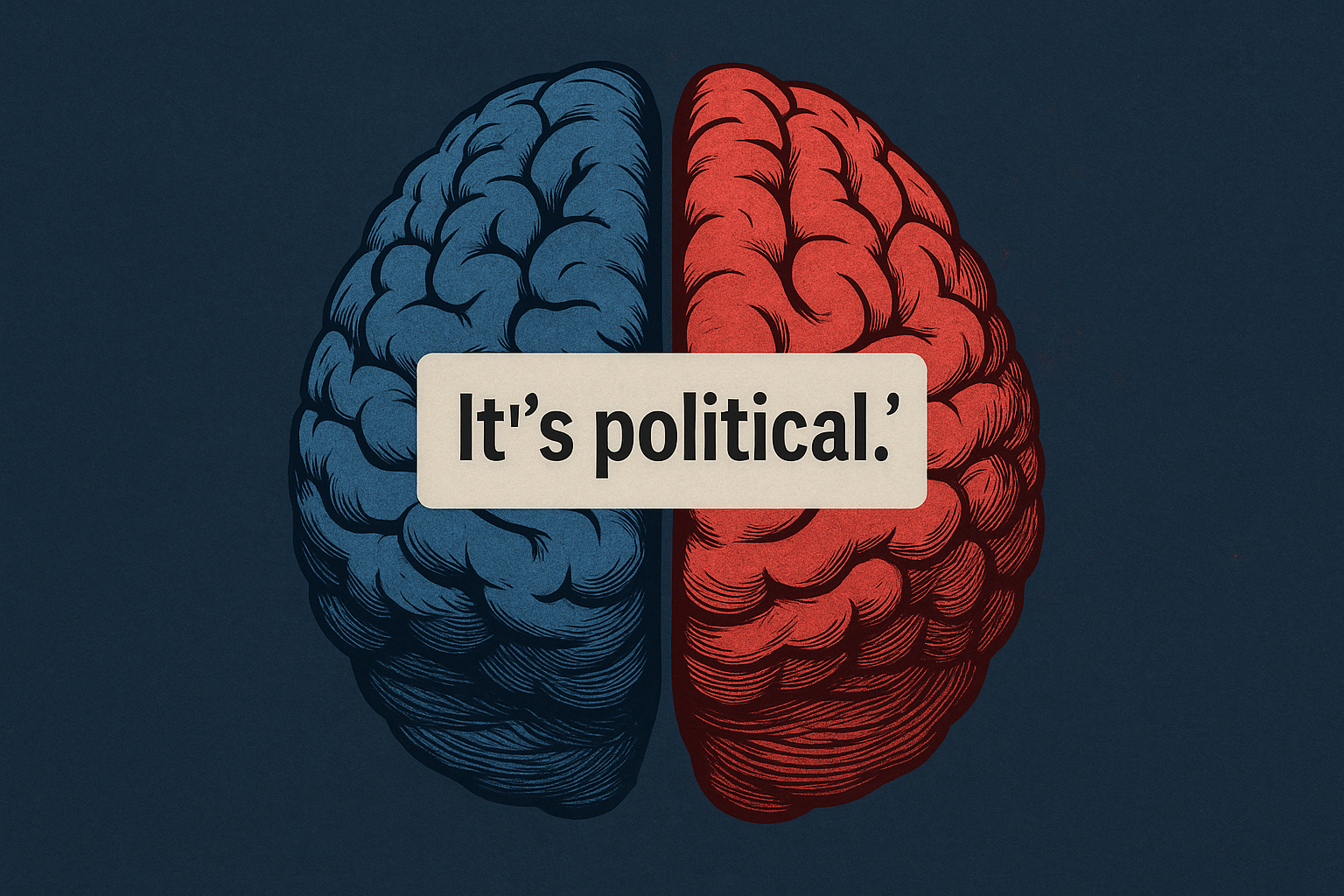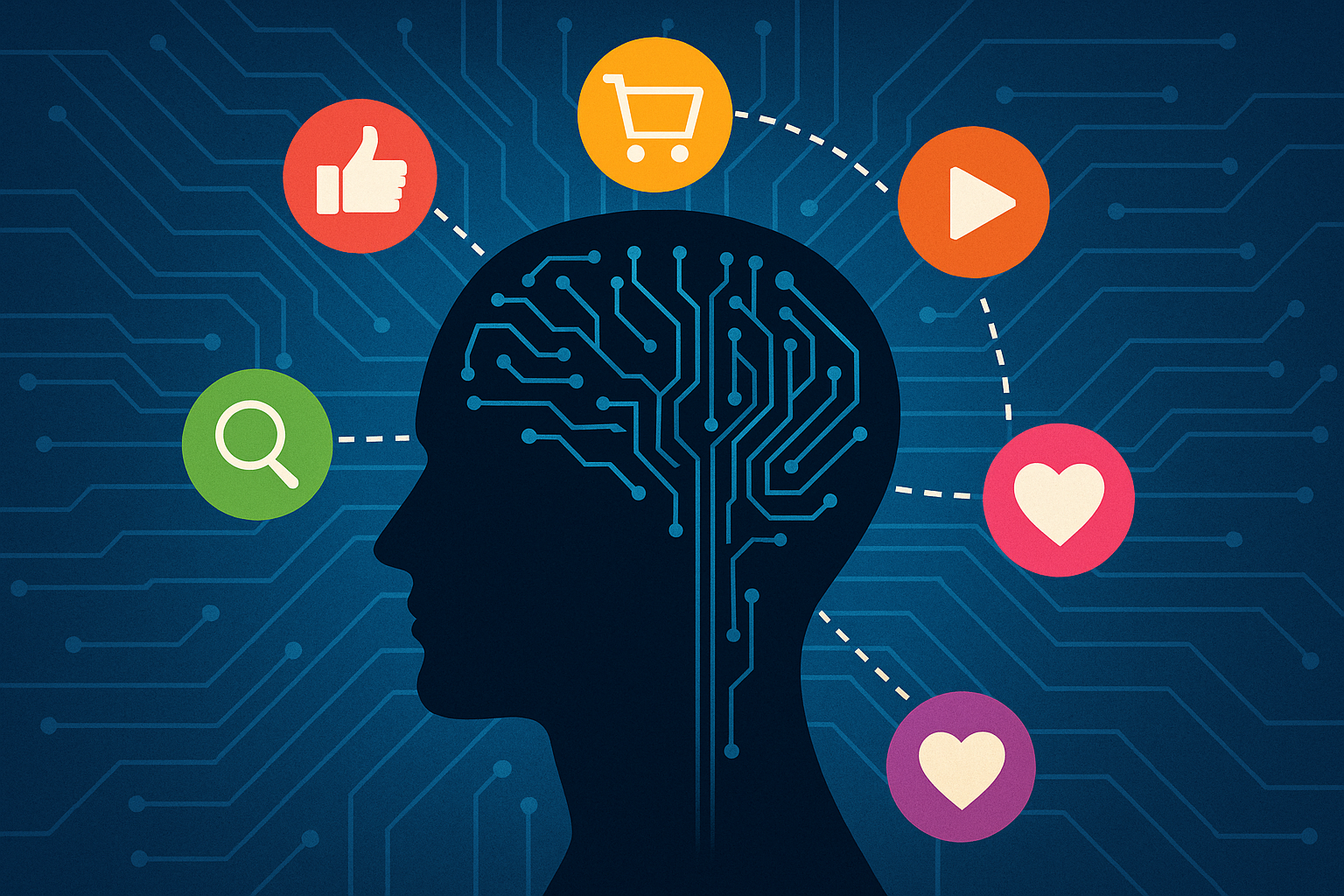Continue reading or listen to the article read by Ed Calder.

Conscious and Unconscious Bias
To unpack the negative impression of bias, we start by distinguishing conscious and unconscious bias. Conscious bias is an intentional thought or action in favor of, or against, one thing, person, idea or group compared with another, usually in a way that’s considered to be unfair or unjustified. This is typically what we think of when we hear the word “bias”. Unconscious bias is an unrecognized mental process or categorization that is intimately tied to how the human brain processes information, specifically what neuroscience experts call “cognitive heuristics”. The fact is that if we have a brain, we have bias.
Our brain uses bias to protect us – both to literally keep us safe from harm and also to protect us from the onslaught of information our brain is dealing with at any one time. Our brains navigate 11,000,000 bits of information at any given moment, but our conscious brain can only process 50 bits of information per second. The distance between 50 and 11 million is where unconscious bias resides.
We develop mental shortcuts to perform everyday activities, and cognitive biases are the result. Cumulative advances in neuroscience, social psychology and biology have discovered over 200 named cognitive biases!
Even though cognitive biases are universal, they are not neutral. They can easily lead to social stereotyping in how we interact with each other, and can be the seeds of negative institutional culture and decisions. Understanding cognitive biases provide us with tools to identify our patterns and our role in perpetuating them.
In the workplace, mitigating cognitive biases helps improve many areas:
- Better decision-making in team environments
- Promote intellectual curiosity
- Attract and retain top talent
- Improve company, employee and team performance
- Increase innovation
- Strengthen relationships
- Disrupt institutional biases that are negatively impacting both people and performance
In my research and through my practice, I’ve identified five cognitive biases that are the most common in the workplace, each focusing on a different way that we learn as well as how we make and use categories. These “Frequent 5” form the acronym LEAAP: Like-Me, Egocentric, Availability, Anchoring and Proximity.
With Like-Me Bias, we gravitate towards people who are like us. We all know this to be true from our everyday interactions with other people. In making small talk with someone we have just met, we look for connections so that our brain can rapidly place them into an “in-group” or “out-group”. Our brain tries to determine who is a threat and who is an ally, and it makes this decision on limited information. This shortcut can provide a sense of comfort and security. However, it also means that we overvalue people we think are like us, and undervalue people we think are not like us. The Like-Me Bias can easily lead to establishing informal or formal hiring, collaboration and promotion practices that further entrench this bias into the employee population and governance structure of an organization.
Egocentric Bias is the belief that “my ideas are obvious and absolute”. Egocentric bias can occur when we overvalue our own experience and assume understanding from others. This bias is very common in leadership positions, or in any role where expertise is necessary, like law or medicine. It’s easy for any subject matter expert to overvalue their own experience and expertise because this expertise is what their credibility is based upon. It’s also often infused with their sense of identity and self-worth. However, to truly vet out the best product ideas, determine the ideal prospects or allocate company resources, leaders must put aside their egocentric bias and look at multiple points of view. This is vital to avoiding mental mistakes and making better decisions.
Availability Bias occurs when decisions are made based on easy or incomplete ideas without looking at the bigger picture or perhaps not drilling down into relevant details. This bias increases when we are in a rush or are under a high cognitive load. For most of us this happens every day and all the time as we manage life’s complex details and multiple deadlines. When availability bias is in full effect we take the path of least resistance and, as a result, we make unintentional errors. This might show up as confirmation bias, or only looking at information that supports what we already know, or the halo effect – where we let positive qualities in one area influence our overall perception of someone. Mitigating this strategy means allowing time to consider various points of view, and to approach things from different perspectives.
With Anchoring Bias, decisions are made from a single idea, usually the first data point, graph or image to which we are exposed. Once we have this initial reference point (whether the reference is factually accurate or not), we calibrate all other information against it. When research participants are “anchored” in a particular direction by including a higher or lower data point, the results of their responses are dramatically different. For example, when asked “What is the height of the tallest Redwood Tree?” or “What was Gandhi’s age when he died?”, responses vary by up to 50%, depending on whether a low or high anchor (in this case height or age) is included with the initial question. While anchoring bias is an unconscious process in the receiver of communication, it is often used with conscious intent in sales and marketing by those sending the message. A powerful mitigation strategy is to question the source of the initial information (the anchor) as this gets your mind thinking beyond that first data point.
Proximity Bias is when we unconsciously favor whoever or whatever is closest in time or space while undervaluing those in remote locations. This bias can impact people who work remotely, or who work in multiple office locations where one location is perceived as the headquarters. Proximity bias can even occur within a single office. People who have their desks on different floors can suffer a disadvantage due to their relative distance from more influential people. To mitigate proximity bias in meetings where some participants are physically present and others participate remotely, actively structure the meeting to include the people joining remotely as well as those in the same physical space. For example, assign a specific role for those who are remote. Don’t assume that joining remotely will have the same impact as being there in person because that is rarely the case.
Although we’ve discussed all of these biases in isolation – in real life they feed on each other. They intertwine and multiply their combined impact.
These unconscious mental processes dictate our decisions, and even determine with whom we interact and form relationships. There’s a cause-and-effect chain of events:
- Unconscious cognitive biases can lead to social biases (race, gender, age, culture).
- Social biases dominate decisions, conduct, and interactions — including the people we surround ourselves with, the people who get hired, how we govern our workplace behavior. They are best measured by behaviors and actions, not thoughts.
- Institutionalized biases are social behaviors that become formalized and entrenched over time. Deviations from these norms now become more difficult because they are perceived as change or something other than the “way we’ve always done things.”
There’s good news though – we can become skilled at recognizing how cognitive biases and distortions crop up for each of us individually, how they appear in our relationships – and even how they are mirrored in the structures around us. Understanding our “hard-wired” cognitive biases will give us the tools we need to identify our patterns, and take conscious control over how we overcome or perpetuate our bias-driven behaviors.
In the workplace, your company’s success – and even its survival – can depend on how your organization deals with bias. McKinsey and Company research found remarkable correlations between diversity and business success:
- Gender-diverse companies were 21% more likely to have increased profitability
- Ethnic and culturally diverse companies were 35% more likely to outperform industry median
- Women in executive roles: top-quartile companies had ten times the ratio of female execs than bottom-quartile companies
Company culture has boomed in importance in recent decades, as study after study correlates culture to financial success. Diverse workplaces – and HR practices that are enlightened regarding biases – are directly rewarded on the bottom line.
There simply is no downside for a business that takes bias seriously. When a company raises unconscious biases to a conscious level – and spreads that viewpoint top to bottom in the organization – it leads to better decisions, a happier workplace and better financial performance.

Percipio Company is led by Matthew Cahill. His deep expertise in cognitive, social, and workplace biases is rooted in the belief that if you have a brain, you have bias®. He works with executives to reduce mental mistakes, strengthen workplace relationships & disrupt existing bias within current HR processes, meeting protocols and corporate policies. Matthew has demonstrated success with large clients like LinkedIn, Salesforce and dozens of small to mid-size companies looking to create more inclusive workplaces, work smarter, generate more revenue and move from bias to belonging®.





